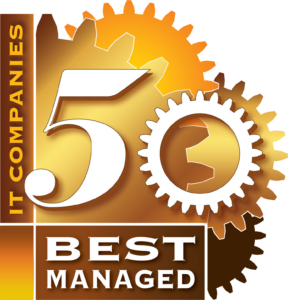
Maximizing Value From Managed IT Services
Maximizing Value From Managed IT Services
What should business owners look for in managed IT services?
One essential question when you’re comparing managed IT service vendors is about strategy and process. Do they have a good strategy for your business? Do they have a process that makes you feel confident?
A successful managed service relationship starts with a good process that delivers a consistent and specific outcome.
Managed IT Services for a Positive Outcome
Next, what’s the goal? What outcome is your business aiming for?
When we talk to clients who are at different stages of the decision-making process, they say that all IT service providers look the same. They talk to three different vendors, for example, and they all say a lot of the same words, and it’s difficult to really see the difference between the vendors. And further, one vendor might offer services at half of the cost of another.
We know that it’s challenging to see the differentiators. We recommend digging beneath the surface and asking questions. Anyone can say they’re going to be proactive, for example, but what does that really mean for your organization? What are proactive tasks do they do regularly? And what outcomes do they expect to see from those tasks?
Another vendor might say they’ll monitor your systems, but what does that really mean for your organization? What are they monitoring? How quickly do issues get resolved when something triggers an alert? And what indicators do they use to measure success?
How Do You Measure IT Success?
We ask business leaders how they measure IT success all the time. Most say that they don’t.
From there, we ask if people are happy or if there are issues that require attention. As an organization, we’ve found that a key performance indicator (KPI) is the number of issues that you have in a given month.
If you have 50 users, for example, and you have 50 support tickets in a month, that’s a lot of problems. And if we can reduce that number by three-quarters, your team is suddenly having an entirely different experience.
Business Models for Managed IT Services
As you’re considering partners for managed IT services, you’ll see a few different business models and pricing models on the market. The most common are based on users and devices, and prices may vary. Some will cost half as much as others, for example, and you have to step back and look at the big picture. What do you need as an organization, and what are your goals?
Quite frankly, you get what you pay for with a managed service provider. If you’re looking at two vendors and one vendor costs half as much as the other, you should expect a different type of service. It’s not going to be exactly the same.
When we look at the marketplace today, most of the vendors that are doing a good job are in the same price range. If you’re looking at a couple of different vendors and you’ve got a few that are within the same range and some that are lower, that typically means is that the lower-cost vendor is more reactive. They’re not investing the time to be truly proactive. They’re not doing the work in the background to make sure that your organization is going to be safe and secure.
Price Points for Proactivity
At that price point, they don’t have the time to do the truly proactive tasks. As a business owner, you want to invest enough to achieve the results that you want. And for most of our clients, what they really want from technology is for everything to just work. They want to have the right tools in place, and they want to sleep at night knowing that their, that their risks are managed.
As you go through the process of selecting a managed service vendor, it can be challenging to evaluate the different offerings in front of you. When vendors are all nice people saying the same things, it’s hard to know which one to pick. So the question becomes, which vendor is best for your organization.
Digging Deeper for Clarity
Again, we always encourage people to dig deeper than the surface level of what is provided.
Everyone will say that they do some form of proactive planning, maintenance, monitoring, and support. But what that means can vary.

For example, regarding big picture strategy, how often do they meet with you? What do you discuss as you’re going through that process?
Ask for examples of the strategic planning that they do. Can they show you how they work with you on a regular basis? Do you get reports on the health of your infrastructure and where you need to go?
The other issue is proactive maintenance. How often does it happen? What is being done, and what results should you expect? And finally, what KPIs — like the number of monthly issues — do you use to measure success?



